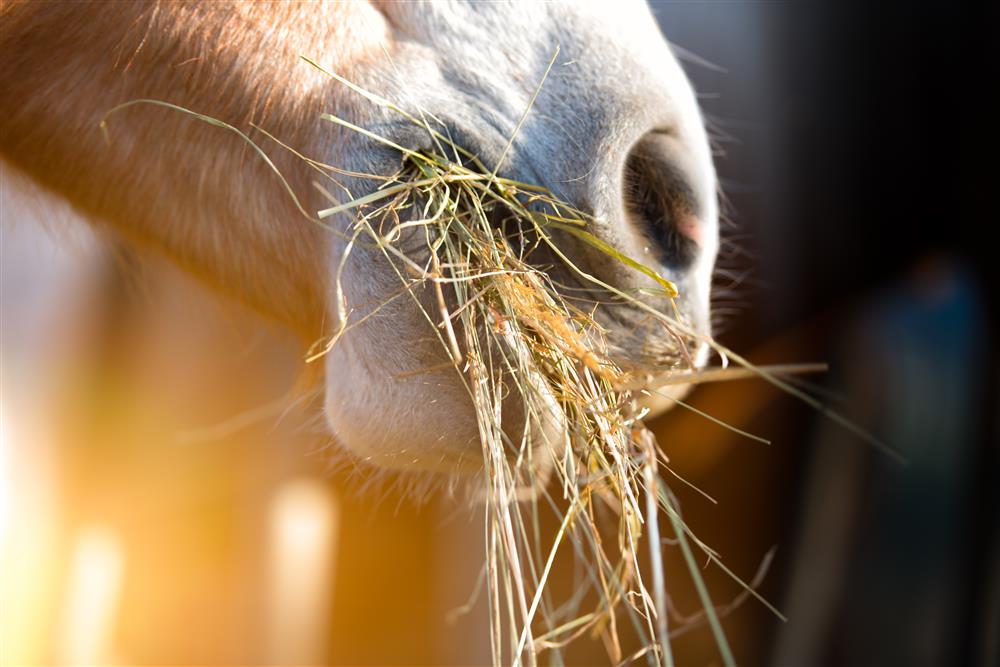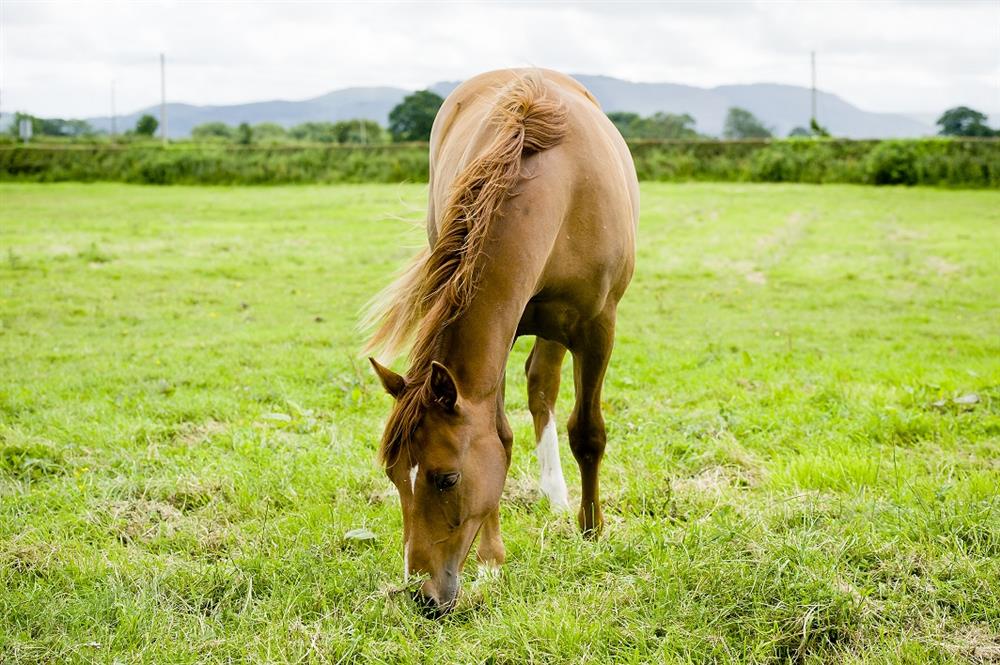Parts of the digestive system...
The Mouth
The mouth is where the digestive system starts and is essential for the horse to ingest food and begin the process of altering the physical form of their food for digestion. The mouth is home to salivary glands which produce saliva to lubricate food and make it easier to swallow. On average, a horse fed a normal diet will produce 10-12 litres of saliva per day. Saliva contains bicarbonate which acts as a buffer and is helpful when food is passed into the stomach.
The number of chewing movements is much greater for forage/roughage compared to that for concentrates. When horses are stabled for longer periods and fed on hay and concentrates rather than grazing at grass, their chewing rate and consequently saliva production will decrease. It is, therefore, important to provide plenty of forage – hence why it is recommended to add a chaff such as chopped alfalfa to your horse’s hard feed.

The Oesophagus
The oesophagus connects the mouth to the stomach and is a muscular tube about 1.2 to 1.5 meters long which contracts to allow food to be pushed through. Increasing the horse’s chewing time will reduce the risk of the horse getting food lodged in the oesophagus and therefore decrease the chance of choke.
The Cardiac Sphincter
The Cardiac Sphincter is a one-way valve connecting the Oesophagus to the stomach. It prevents food re-entering the Oesophagus which is why horses are unable to vomit.
The Stomach
The stomach is quite small compared with the rest of the horse's digestive system, making up only about 7.5%, and it has a capacity of about 8 to 15 litres. This is because horses are designed to be trickle feeders, so should be eating small quantities of food but frequently. In the stomach, the ingested food is mixed with hydrochloric acid (to help break down solids) and Pepsin (an enzyme to help break down proteins) allowing the rest of the digestive system to work effectively.
The stomach is made up of two types of tissue. The upper section is lined with squamous mucosa which is vulnerable to irritation if it comes into contact with the stomach’s acid. The lower section is lined with glandular mucosa which is where the stomach acid is secreted to aid digestion (this part is protected from the acid). The two sections are divided by the margo plicatus which can often be where ulceration may be found.
Food is only held in the stomach for a short period of time however it is rarely completely empty, with some food remaining there for two to six hours.
.jpg) The Pyloric Sphincter
The Pyloric Sphincter
The Pyloric Sphincter is another valve that controls the movement of food, this time between the stomach and the small intestine.
The Small Intestine
Food is then passed to the small intestine which is about 27% of the horse's digestive system, this is where the absorption of nutrients and further digestion occurs. The small intestine connects the stomach to the large intestine.
The small intestine is made up of three parts: the duodenum, jejunum and the ileum. It normally takes about 30-90 minutes for food to pass through the small intestine.
The duodenum is about 1m long. Enzyme and bile secretions from the pancreas and liver aid the breakdown of food into basic nutrients here. As horses do not have a gall bladder to store it, bile goes directly from the liver to the small intestine. The pancreas supplies the majority of the enzymes needed to break down fats, protein, starch and sugar. Lipase is also secreted by the stomach and the pancreas to break down fats. Amylase is secreted by the pancreas into the small intestine to break down carbohydrates, protease breaks proteins down into free amino acids and lactase, which is found in the small intestine of young horses, breaks down lactose.
The jejunum is a much longer section at about 19m, this is where nutrients are absorbed into the horse's bloodstream after further chemical breakdown of food.
The Ileum is the last part of the small intestine and again is about 1m long. Further nutrients are absorbed here and the remaining fibre and water from the food is passed to the large intestine.

The Large Intestine
As the name suggests, the large intestine occupies the biggest part of the digestive tract at 65% and consists of the caecum, large colon, small colon and the rectum.
The caecum can hold a large volume of up to 35 litres and contains many special bacteria called microbiota which break down undigested food from the small intestine (such as the cellulose of plants like grass and hay) so that it can be further digested, and the nutrients absorbed. Food can remain in the caecum for up to 7 hours for this process to take place. The horse’s gut microbiota adapts to process what the horse normally eats and are very sensitive to changes which is why any changes in your horse’s diet must be done gradually.
The microbiota continue to digest large quantities of fibrous food in the large colon which consists of a number of sacks or pouches - if these become filled with gas from the hind gut fermentation process it can result in a “twisted gut” and cause colic. The large colon is also vulnerable to blockages and impactions, again, this is why you must allow the horse’s microbiota to adjust gradually when making dietary changes.
Food then passes through to the small colon, at this point most of the nutrients from the food have been utilised and what remains is food matter that cannot be digested any further. The small colon will absorb excess water and electrolytes to be used within the body and forms the remaining matter into faeces which are passed through to the rectum and excreted.
If you have any queries about your horse’s diet, please contact out Nutritionists who are available seven days a week. Call freephone 0800 585525 or email [email protected].

